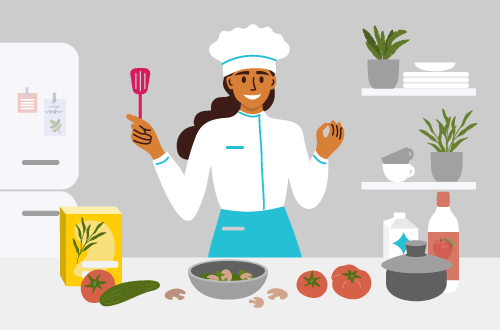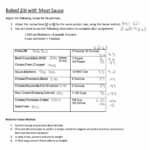Scaling Recipes for Operational Excellence
Scaling Recipes for
Operational Excellence
Success in foodservice comes down to three essential components: customer satisfaction, food quality, and cost control. A contributing factor to achieving successful results in these areas is standardizing and scaling recipes.
Let’s take a look at the fundamental components of a standardized, scaled recipe and how its implementation can advance your nutrition and foodservice department, leading to operational excellence.

What Are Standardized, Scaled Recipes?
A standardized recipe is a set of instructions used to consistently prepare a known quantity and quality of food for a specific menu. Utilizing standardized recipes will produce a product that is close to identical in taste and yield every time it is made, no matter who follows the directions.
Scaling recipes means adjusting the number of servings by multiplying (to increase) or dividing (to decrease) the quantities of the individual ingredients in the recipe to match the production requirements. Accurate items/ingredients are the building blocks for recipes.
So, why does standardizing and scaling recipes matter so much? Producing accurate recipes for menus is vital for patient safety and necessary when providing a nutritious meal that adheres to the patient’s prescribed diet order.
The History of Scaling Recipes
The concept of recipe scaling is a basic process; however, the tools to complete the process have evolved considerably over time. Before facilities automated with a foodservice management program, there was a variety of manual adjustment calculations, formulas, and spreadsheet applications (such as Excel) to complete the process.
Healthcare nutrition and foodservice operators have made vast improvements in operational efficiency by utilizing recipe management software. Now, many facilities have nutrition and foodservice management solutions to complete this process efficiently and quickly.
Ten Essentials of a Good Standardized Recipe
We’ve walked through the definition and history of standardized, scaled recipes, but what about building one? Here are ten important details to consider:
- Recipe name – the name of the given recipe should be consistent with the name on the menu
- Standard recipe yield – number of servings or portions that a recipe produces, and often the total weight or volume of the recipe
- Portion size – amount or size of the individual portion
- Ingredient list/amounts – exact quantities of each ingredient (except for spices that may be added to taste)
- Preparation method – specific directions for the procedures in order of operations and types of operations (e.g., blend, fold, mix, sauté)
- Cooking temperatures and times – including HACCP plan critical control points and limits to ensure the dish is cooked properly and safely
- Special service instructions – including plating/garnishing according to the standard format used in an operation
- Mise en place – a list of small equipment and individual ingredient preparation
- Service instructions – including hot/cold storage
- Recipe costing – based on ingredients and amounts
In addition to the list above, standardized recipes should also include nutritional analysis, assigned production areas, batch sizes, variations for modified diets, garnishing and presentation tips, work simplification tips, suggested accompaniments, companion recipes, and photos.

Sample Menu Scaled Recipe
Here is a link to one of my favorite entrée salads for the summer: Salmon Berry Salad. This dish is full of fresh blueberries, raspberries, and strawberries; tossed with spinach, green leaf lettuce, and slivered almonds; and topped with grilled or blackened salmon and a drizzle of raspberry balsamic vinaigrette. Yum!
Hungry for More?
We hope this article has provided you with valuable knowledge regarding a key element of an effective nutrition and foodservice software solution. We’re here to help! Reach out to us at info@computrition.com today if you would like to learn more about streamlining your recipe processes. Next month, we will continue to explore the theme of menu scaled recipes.

Thomas Olson has an extensive 25-year background as an award-winning executive chef and system director of a large healthcare system, with experience in various nutrition and foodservice management models. Previously a long-time Computrition user, he is now a full-time Computrition team member. A few of his favorite things include culinary creations, enhancing automation and process efficiency, and helping others with what he has learned.

